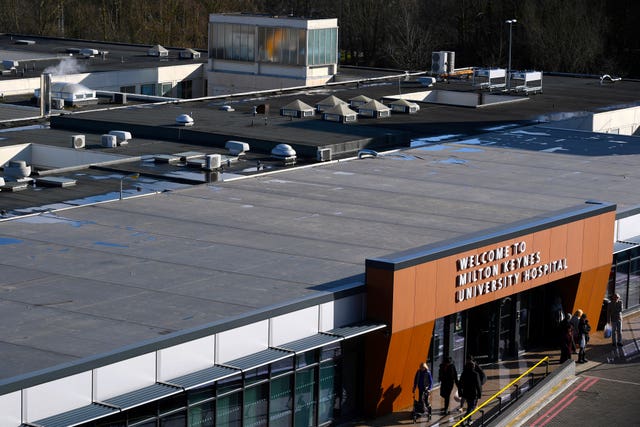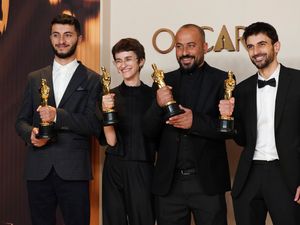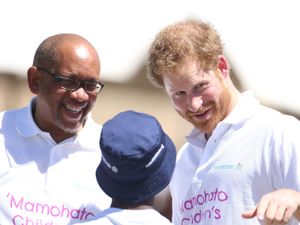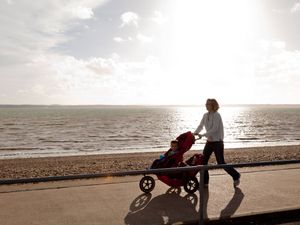Doctor tells inquest breathing tube mistake was ‘grave error’
Retired consultant radiographer Glenda Logsdail died after a cardiac arrest, having had a breathing tube wrongly placed.

A former NHS consultant radiographer died after a breathing tube was wrongly inserted into her throat, with an experienced medic failing to spot the error in time, an inquest has heard.
Mother-of-two Glenda Logsdail died at Milton Keynes University Hospital on August 23 2020, after her blood oxygen levels plunged and she suffered a cardiac arrest as she was being prepared for theatre.
A coroner heard how she was originally admitted to have surgery for septic appendicitis – and should have expected a 99% chance of survival.

But highly experienced consultant anaesthetist Dr Wael Zghaibe told how he made a “grave error”, after mistakenly inserting a breathing tube.
Instead of taking oxygen into the lungs, the tube was directing oxygen into her stomach – known as oesophageal intubation.
It was 15 minutes after the incident began, when a senior colleague arrived and spotted what the Logsdail family’s barrister described in court as a “basic and catastrophic” mistake with the intubation.
Dr Zghaibe said he mis-identified symptoms, wrongly believing the 61-year-old was suffering a potentially life-threatening allergic reaction – known as anaphylaxis – to the pre-operative medication.
The coroner also heard how he initially allowed an “unqualified” colleague to first attempt the intubation, but then inserted the endotracheal (ET) tube himself after it was unsuccessful.
Giving evidence at Milton Keynes Coroner’s Court on Tuesday, Dr Zghaibe said: “I saw the intubation was straightforward and saw the tube going into the right position.
“I did not suspect at that point or any point, for that matter, it was a tube-related issue.”
When monitors showed Mrs Logsdail’s output of carbon dioxide (CO2) – a by-product of normal breathing – had dropped to virtually nothing, he “started linking symptoms” to make an incorrect diagnosis.
“I felt that, probably, I am facing anaphylaxis,” he added.
Within a few minutes, Mrs Logsdail, who previously worked at London’s Royal Marsden and later Northampton General Hospital until retiring in 2017, was pulseless and her oxygen saturation levels had plummeted to “60-65%”.
A more senior consultant Dr Navreet Ghuman arrived, and used a laryngoscope to look “at the position of the tube, and discovered it was in the wrong place”, before removing and replacing it.
Assistant coroner Dr Sean Cummings asked Dr Zghaibe: “You say you did not suspect the misplacement of the tube was the issue. Can I ask why?”
Dr Zghaibe said he saw signs suggesting the intubation was successful, including “bi-lateral chest movements”, which were among standard measures “for assessment of airway positioning”.
However, he added: “There are other steps we take, which unfortunately I did not take, including (observing) misting of the tube, with vapour.”
Another junior colleague, arriving to help, also asked “whether the tube was in the right place”, to which Dr Zghaibe replied: “Yes, Grade One view”, while he told another co-worker the intubation had been “easy”.
He noted the lack of CO2 – known as the CO2 trace – coming back out of Mrs Logsdail’s lungs, but did not link the symptom to a wrongly-placed ET tube.
He said: “I did not think of it at the time because I was going in the wrong direction, with the wrong diagnosis.”
The court heard that in 2018 the Royal College of Anaesthetists had created a training video directly relating to lack of CO2 output being symptomatic of incorrect intubation.
The coroner asked the doctor: “So, you accept you should have considered misplaced intubation – or misplacement of the ET tube?”
Dr Zghaibe replied: “I do.”
He also accepted the “movement of air into Mrs Logsdail’s stomach” would have accounted for any chest movements he had observed.
The inquest also heard how Dr Zghaibe invited an unqualified operational department practitioner (ODP) to attempt the initial intubation, but she was ultimately unable to do so.
The coroner asked: “Mrs Logsdail was coming to theatre because she had a septic appendicitis – was it appropriate to attempt to teach on a patient in that situation?”
The anaesthetist replied: “To be honest, in hindsight, clearly it wasn’t appropriate.”
Neil Sheldon QC, representing Mrs Logsdail’s family, asked: “Why is it you ruled out an error on your part?”
The doctor replied: “It never occurred to me that I could have made such a grave error.
“Because I was focused (on anaphylaxis) – that that was my diagnosis.
Mr Sheldon asked the doctor: “Just so we are clear, the only thing you would have needed to do to identify this mistake would have been to pick up the laryngoscope in the room and check the position of the tube, agreed?”
“Correct,” replied Dr Zghaibe.
Ahead of the hearing, Kate Rohde, of Fieldfisher solicitors, representing Mrs Logsdail’s family in a medical negligence claim, said the inquest would be “incredibly difficult” for the relatives, but would hopefully provide answers as to why she died.
The inquest continues.





